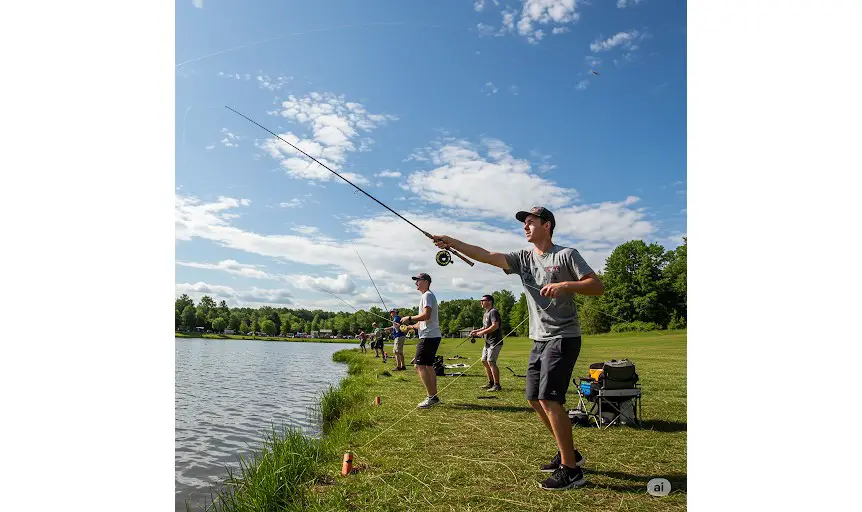
Exploring the World of Casting: A Timeless Sport
Casting, a fascinating sport with deep historical roots, continues to captivate enthusiasts worldwide. Combining precision, technique, and a connection to nature, it has evolved significantly over the years. This blog delves into its rich history, global popularity, amateur engagement, professional leagues, and social significance. By understanding its rules and cultural impact, you can appreciate the depth of this unique sport.
The Origins and History
It traces its origins to fishing, an essential survival activity for ancient communities. Early humans used hand-thrown lines to catch fish in rivers and seas. Over time, these techniques evolved into recreational practices. By the 18th century, the idea of competitive casting emerged in Europe, particularly in England and Scotland. These events showcased anglers’ skills, transforming fishing into a structured sport.
The 19th century saw the formalization of casting as a competitive activity. Clubs dedicated to the sport began to form, establishing rules and organizing events. The first official tournament took place in Scotland in 1864. Shortly thereafter, the sport spread to the United States, where organizations like the American Casting Association (ACA) standardized techniques and rules.
Modern casting incorporates various disciplines, including fly, accuracy, and distance casting. Each discipline emphasizes a specific skill set, making the sport accessible to diverse participants. Today, it is recognized globally for its combination of tradition and innovation.
The Global Popularity
It enjoys widespread popularity across continents, attracting participants from all walks of life. In Europe, the sport thrives in countries like Germany, Sweden, and Poland. These nations host some of the most prestigious tournaments and boast well-established clubs. The Scandinavian region, in particular, values casting for its alignment with outdoor traditions and conservation efforts.
In North America, the United States and Canada lead in promoting casting. These countries organize national championships and grassroots initiatives, encouraging participation among youth and families. Similarly, Asia has witnessed growing interest, especially in Japan, where precision and technique resonate with cultural values.
Casting’s global appeal stems from its versatility. Urban settings offer casting pools and indoor arenas, while rural areas provide natural lakes and rivers. This adaptability ensures that people from diverse regions can engage with the sport.
Amateur Casting: Youth and School Participation
Amateur casting serves as the backbone of the sport, fostering interest and nurturing talent. Many schools and community programs introduce it through workshops and competitions. These initiatives teach fundamental skills while promoting environmental awareness.
Youth leagues often focus on fly casting and accuracy casting, which are accessible to beginners. Children learn essential techniques like rod handling, line control, and target aiming. These skills build confidence and encourage a lifelong passion for the sport.
Schools in regions like Scandinavia and North America incorporate it into physical education curricula. These programs highlight the sport’s physical and mental benefits, such as improved hand-eye coordination and stress relief. Additionally, youth tournaments provide opportunities for young casters to showcase their abilities on regional and national stages.
Professional Casting Leagues and Events
The professional scene features a network of leagues and events that elevate the sport’s profile. Europe leads with organizations like the International Casting Federation (ICF), which governs global competitions. The ICF organizes the World Casting Championships, attracting elite athletes from around the world.
In North America, the American Casting Association hosts annual tournaments that highlight precision and distance disciplines. These events draw professional casters who compete for recognition and lucrative prizes. Japan also holds notable competitions, blending traditional techniques with modern innovation.
Professional leagues provide platforms for athletes to excel while inspiring amateurs to pursue it at higher levels. Sponsorships and media coverage further enhance the sport’s visibility, creating opportunities for growth and development.
Political and Social Significance
It transcends sport, serving as a tool for environmental advocacy and community building. Many organizations use casting events to raise awareness about water conservation and habitat protection. These efforts emphasize the sport’s connection to nature and its role in preserving ecosystems.
Socially, it fosters inclusivity and camaraderie. It brings together individuals of all ages and backgrounds, promoting shared experiences and mutual respect. In regions with limited recreational opportunities, it offers a gateway to outdoor activities and personal growth.
Politically, casting associations often collaborate with governments to advocate for sustainable fishing practices. These partnerships ensure the sport’s longevity while protecting natural resources for future generations.
Understanding the Rules of Casting
It involves a set of standardized rules that vary by discipline. In accuracy casting, participants aim at targets placed at specific distances. Judges evaluate their precision and award points accordingly. Distance casting challenges athletes to cast as far as possible, with measurements determining the winner.
Fly casting requires mastery of specialized techniques. Competitors must navigate obstacles and adapt to varying conditions while demonstrating control over their equipment. Each discipline emphasizes skill, technique, and adherence to ethical practices.
Equipment plays a crucial role. Participants use rods, reels, and lines tailored to their chosen discipline. Regular maintenance and proper handling ensure optimal performance and safety.
Conclusion
Casting’s enduring appeal lies in its blend of tradition, skill, and community. From its historical origins to its global presence, the sport continues to evolve and inspire. By engaging in amateur leagues or following professional tournaments, enthusiasts can experience the joy and challenges of casting. Its social and environmental contributions further underscore its significance. Whether you’re a seasoned caster or a curious beginner, the world of casting offers endless opportunities for discovery and new experiences.




